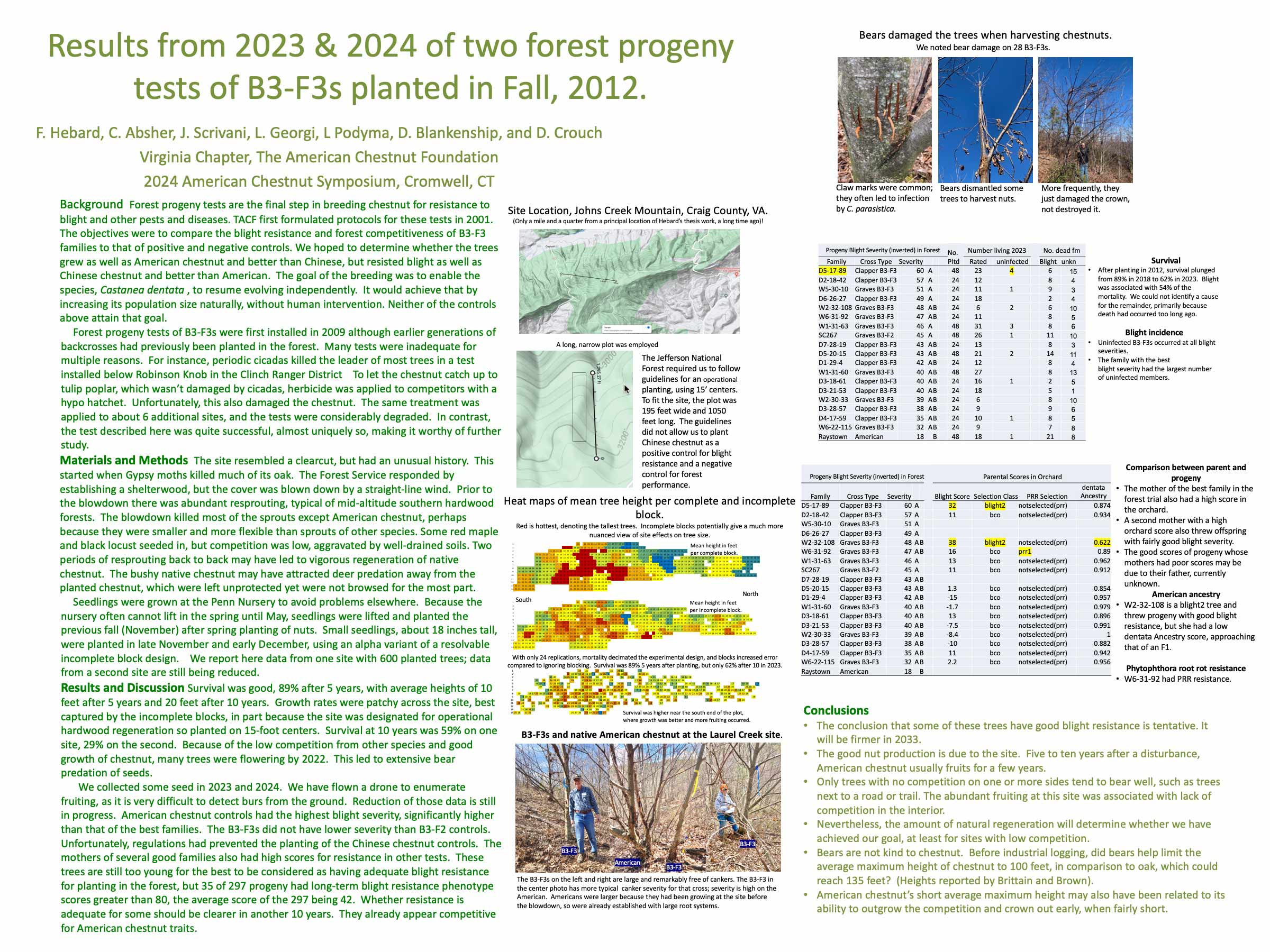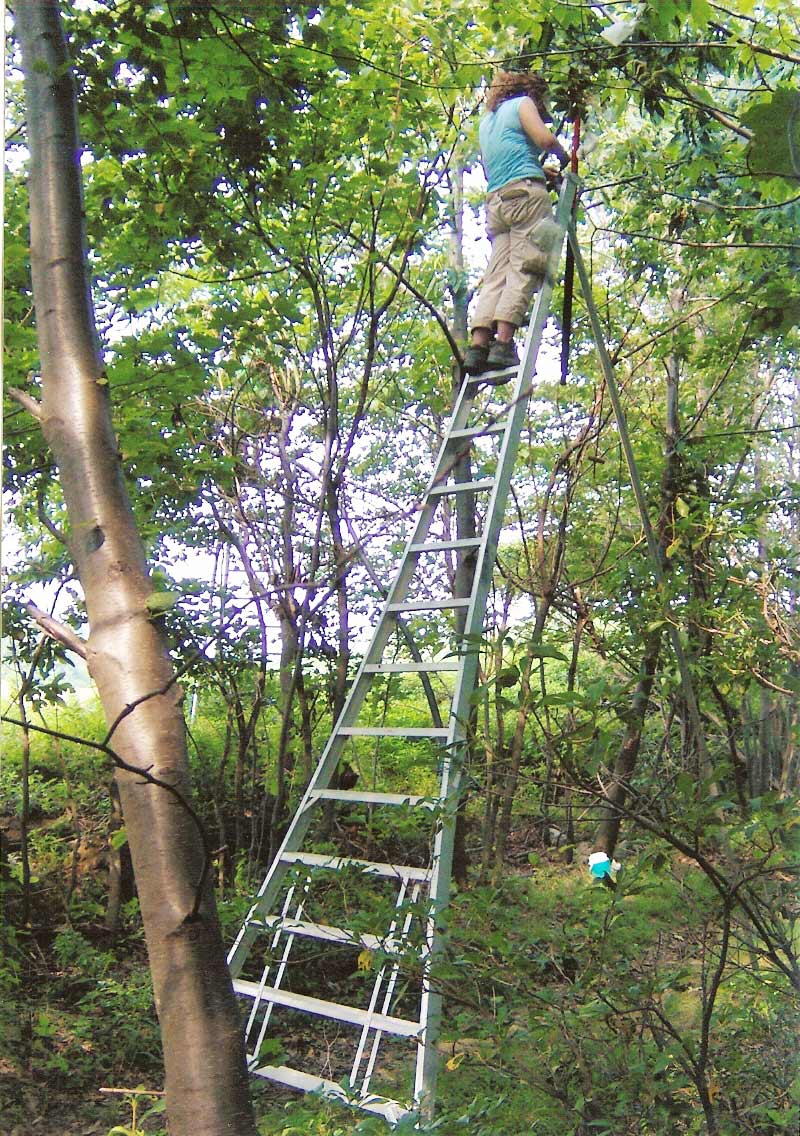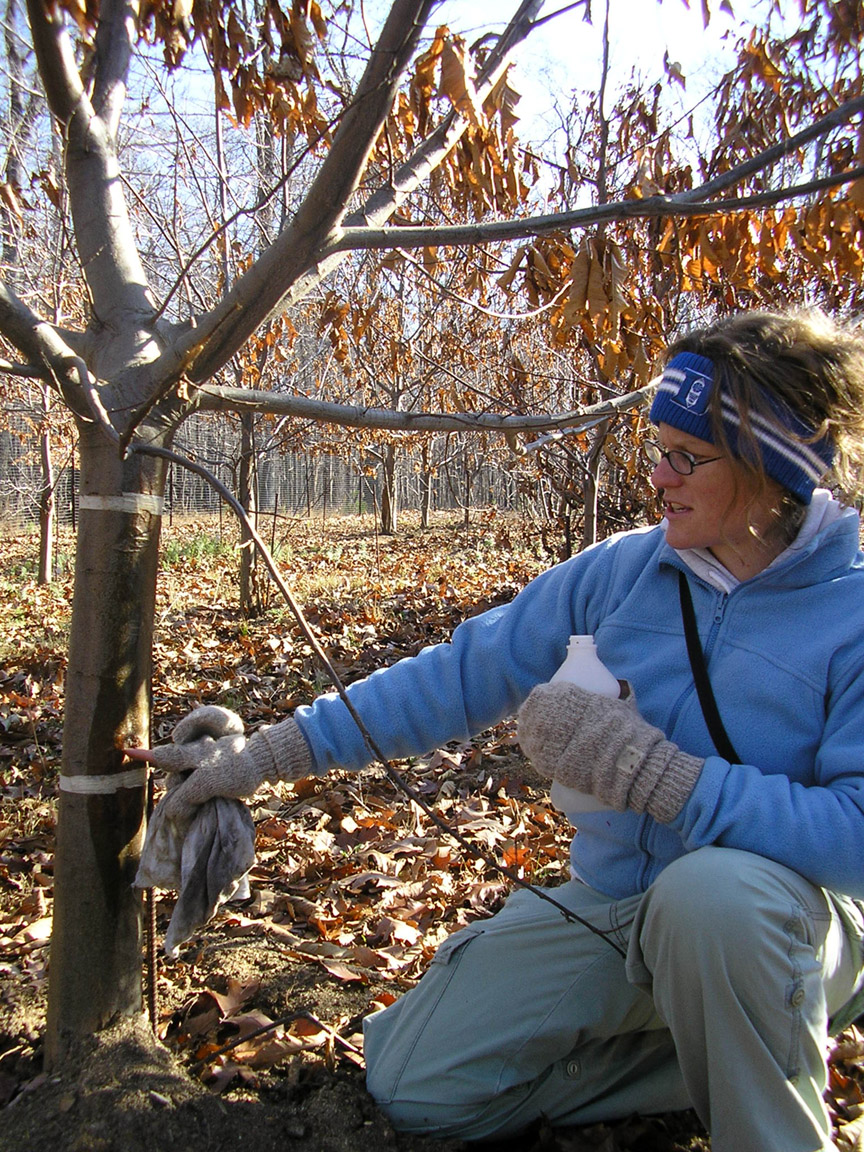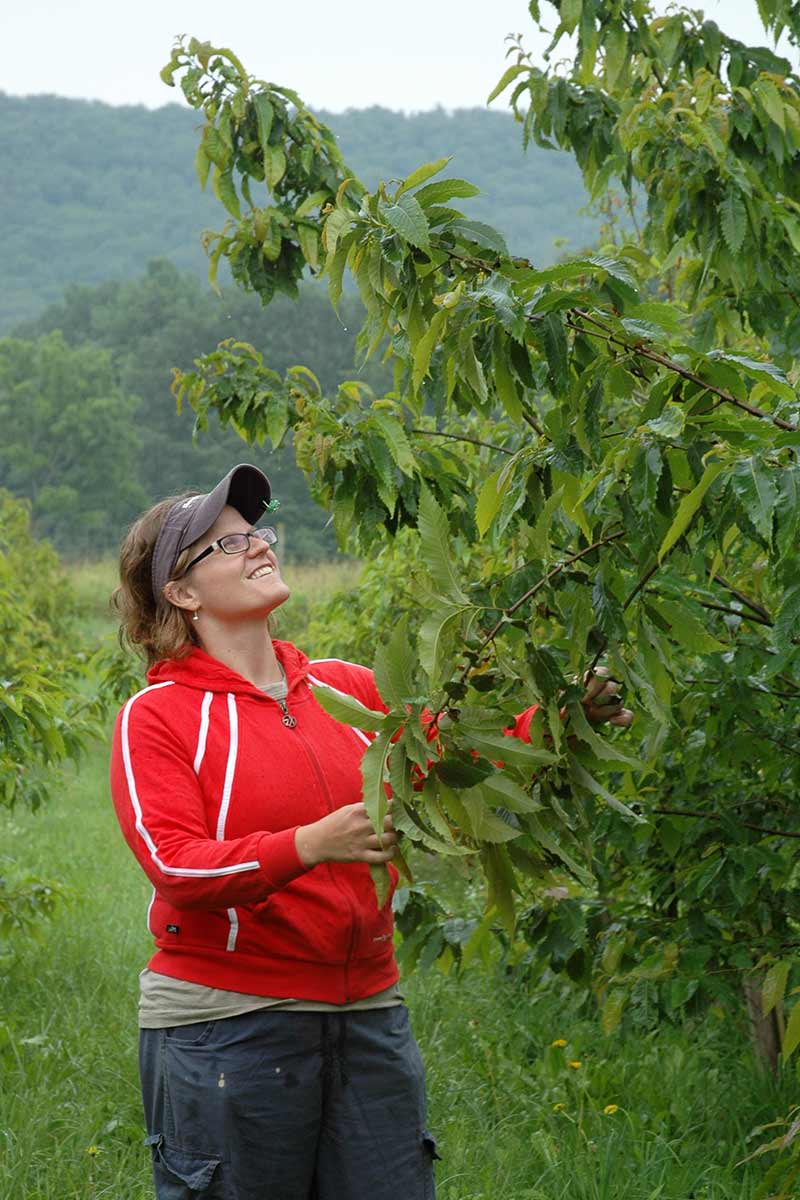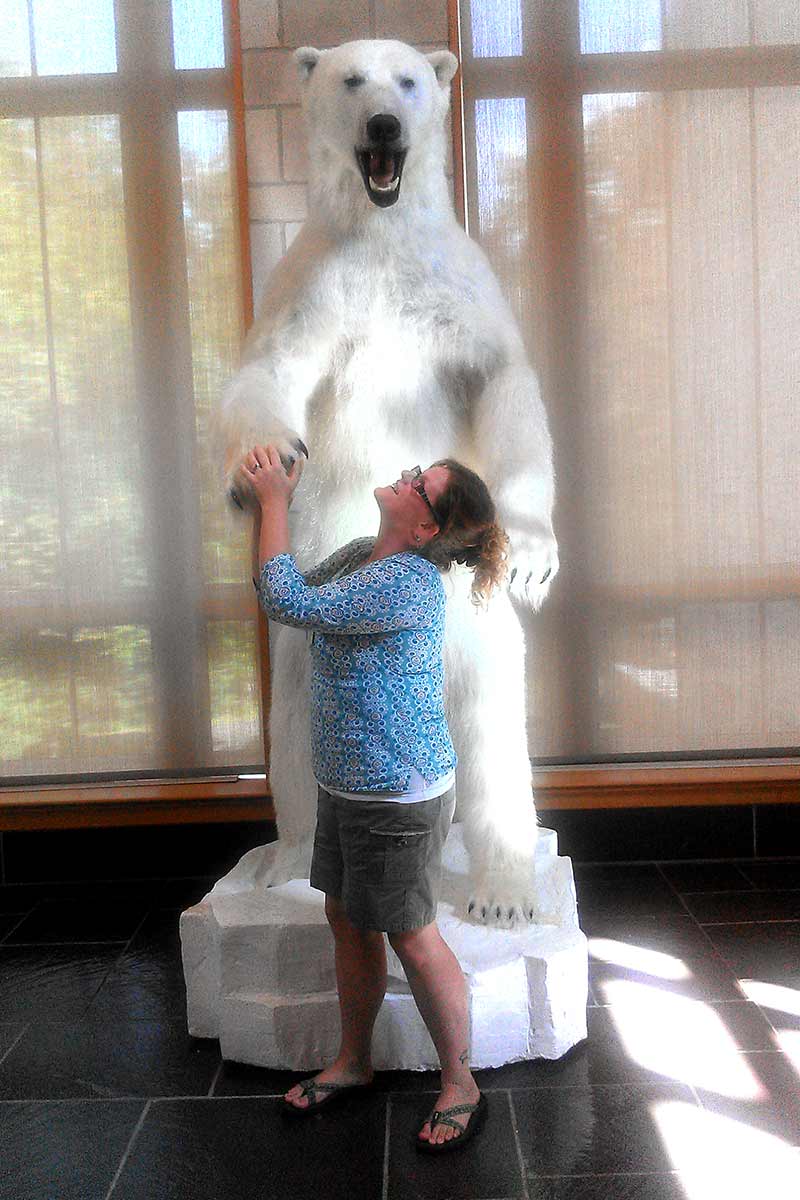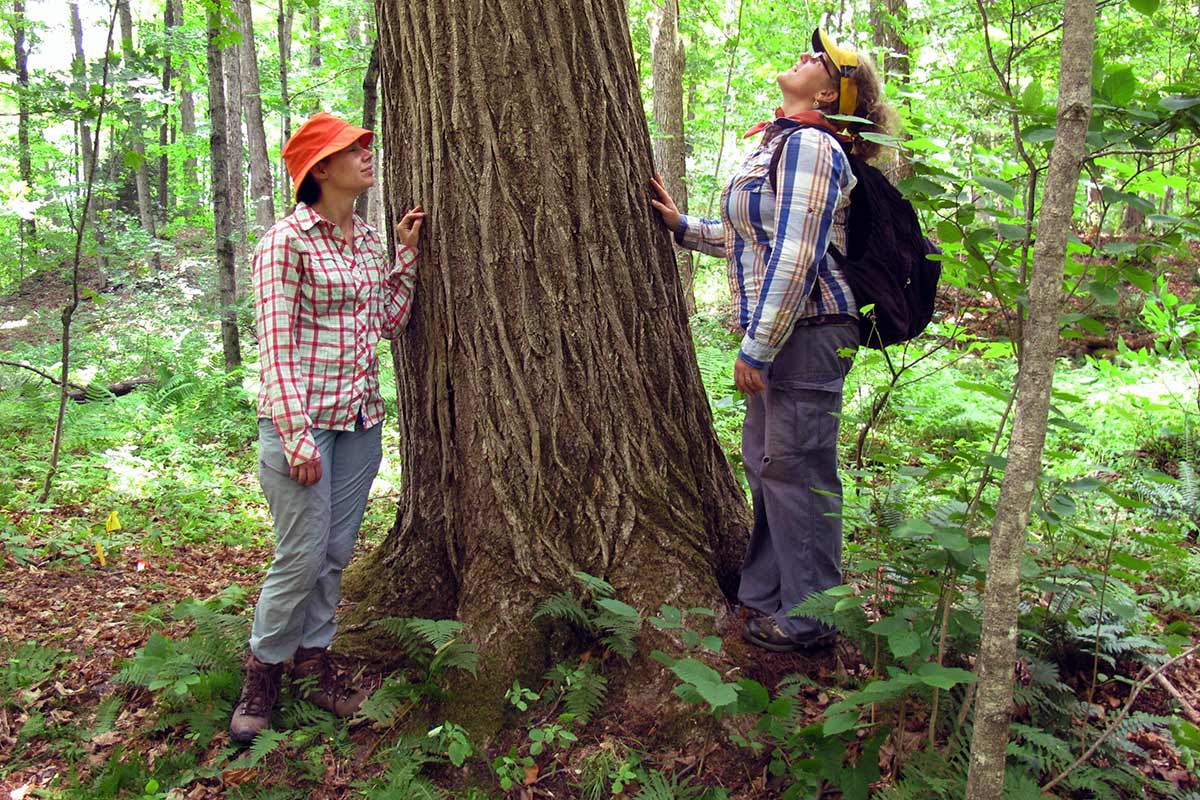2024 Poster Session
Hebard, F., Scrivani, J., Absher, C., Georgi, L., Podyma, L., Blankenship, D., & Crouch, D.
Virginia Chapter, TACF, P.O. Box 158, Marshall, VA 20116
Abstract
The objectives of these forest progeny tests were to compare the blight resistance and forest competitiveness of B3-F3 families to that of positive and negative controls, to determine whether the trees grew as well as American chestnut and better than Chinese, but resisted blight as well as Chinese chestnut and better than American. The goal of the breeding was to enable the species, Castanea dentata, to resume evolving independently, by increasing its population size naturally, without human intervention. Neither of the controls above attain that goal. The site resembled a clearcut, but its unusual history limited regeneration of hardwood sprouts largely to native C. dentata. Some red maple and black locust seeded in, but competition was low, aggravated by well-drained soils. Vigorous native chestnut regeneration may have limited deer predation on the planted chestnut. Seedlings were lifted from the Penn Nursery in the fall (November) after spring planting of nuts. Small seedlings, about 18 inches tall, were planted in late November and early December, using an alpha variant of a resolvable incomplete block design. Survival was good, 89% after 5 years, with average heights of 10 feet after 5 years and 20 feet after 10 years. Growth rates were patchy across the site, best captured by the incomplete blocks, in part because the site was planted on 15-foot centers. Survival at 10 years was 59% on one site, 29% on the second. Because of the low competition but good growth of chestnut, many trees were flowering by 2022. This led to extensive bear predation of seeds. We collected some seed in 2023 and hope to get more this year. We have flown a drone to enumerate fruiting, as it is very difficult to detect burs from the ground. American chestnut controls had the highest blight severity, significantly higher than that of the best families. The B3-F3s did not have lower severity than B3-F2 controls. Unfortunately, regulations had prevented the planting of the Chinese chestnut controls. The mothers of several good families also had high scores for resistance in other tests. These trees are still too young for the best to be considered as having adequate blight resistance for planting in the forest, but 35 of 297 progeny at the better site had long-term blight resistance phenotype scores greater than 80, the average score of the 297 being 42. Whether resistance is adequate for some should be clearer in another 10 years. They already appear competitive for American chestnut traits.

